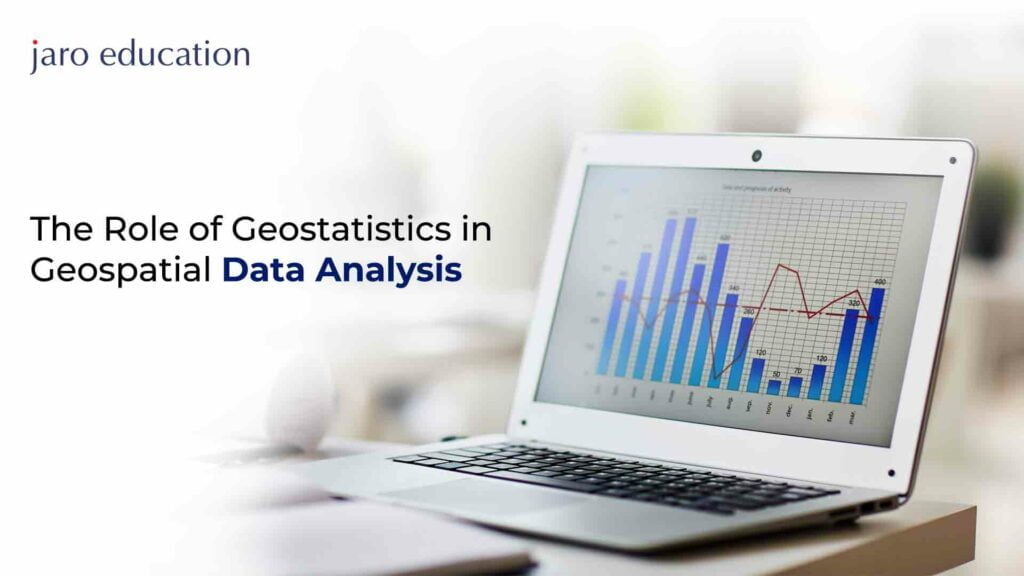Geostatistics is a branch of statistics that deals with spatial data analysis. It provides methods and techniques to study data’s spatial structure and variability and make predictions and inferences about spatial patterns.
Geospatial data, or data that has a geographic component, is becoming increasingly important in various fields, such as natural resource management, urban planning, and environmental modelling. Accurate analysis of geospatial data can provide valuable insights and support decision-making processes.
Geostatistics plays a crucial role in geospatial data analysis. It provides tools and methods to analyse the spatial patterns and relationships in geospatial data, making it possible to make predictions and inferences about geographic phenomena. The combination of geostatistics and geospatial data analysis offers a powerful approach to understanding and solving real-world problems.
Geostatistics in Geospatial Data Analysis
A. Understanding Spatial Autocorrelation:
Spatial autocorrelation refers to the correlation between the values of a variable at different locations in space. In geospatial data analysis, it is important to understand spatial autocorrelation because it can impact the accuracy of predictions and inferences. Geostatistical methods can be used to quantify and control for spatial autocorrelation in geospatial data analysis.
B. Geostatistical Techniques in Geospatial Data Analysis:
Kriging:
Kriging is a geostatistical technique that is used to make predictions about the value of a variable at a location based on the values of that variable at nearby locations. It takes into account the spatial autocorrelation of the data and can produce more accurate predictions than traditional statistical methods.
Cokriging:
Cokriging is a variant of kriging that uses multiple variables to make predictions. It is often used in geospatial data analysis when information about multiple variables is available, and it is important to consider their interrelationships.
Point Pattern Analysis:
Point pattern analysis is a geostatistical technique that is used to study the spatial distribution of points in a dataset. It can be used to identify clustering, dispersion, or other data patterns and make predictions about future patterns.
C. Applications of Geostatistics in Geospatial Data Analysis:
Natural Resource Management:
Geostatistics is widely used in natural resource management, such as in managing forests, water resources, and minerals. It can be used to model the distribution and variability of resources, make predictions about future trends, and support decision-making processes.
Environmental Modeling:
Geostatistics is also used in environmental modelling to understand the relationships between environmental variables and to make predictions about future conditions. It can be used to model the distribution and impacts of pollutants, evaluate the effectiveness of conservation efforts, and support decision-making processes.
Urban Planning:
Geostatistics is increasingly used in urban planning to support decision-making processes related to land use, transportation, and infrastructure development. It can be used to model and predict patterns of land use, population density, and economic activity and to support the design and implementation of sustainable development plans.
Limitations of Geostatistics in Geospatial Data Analysis
A. Limitations of Spatial Autocorrelation:
While spatial autocorrelation is an important concept in geostatistics, it is not always a reliable assumption for all datasets. Spatial autocorrelation can vary depending on the scale and context of the data, and it may not hold for all variables or for all geographic regions.
B. Limitations of Geostatistical Techniques:
Geostatistical techniques are only as good as the data and assumptions used in the analysis. The accuracy of predictions and inferences made with geostatistics can be limited by the quality and quantity of data and the assumptions used in the analysis.
C. Limitations of Applications:
The use of geostatistics in geospatial data analysis also has limitations regarding the scope and complexity of the problems it can address. While geostatistics provides valuable insights and support for decision-making processes, it may not be applicable to all problems or provide all the necessary answers.
Conclusion
Geostatistics is a powerful tool in geospatial data analysis that provides methods and techniques to study the spatial structure and variability of data and make predictions and inferences about spatial patterns. As geospatial data continues to grow in importance, it is expected that geostatistics will continue to evolve and develop new methods and techniques to support geospatial data analysis. Integrating geostatistics with other disciplines, such as machine learning and data science, will likely lead to new advancements in geospatial data analysis. The Advanced Data Science Certificate Program offered by the Rotman School of Management and IIT Jammu is a valuable opportunity for individuals interested in the intersection of geospatial data, geostatistics, and data science. The program provides a comprehensive overview of the latest methods and techniques in geospatial data analysis and offers hands-on training in using geostatistics and other data science tools.






